The Via Egnatia was a road constructed by the Romans in the 2nd century BC, serving as the continuation of the Via Appia on the Eastern side of the Adriatic. With a total distance of 696 miles, it passed through Ancient Illyria, Macedonia, and Thracia to Constantinople. This ancient highway was Rome’s lifeline to the East, facilitating trade, military movements, and cultural exchange for over a millennium.
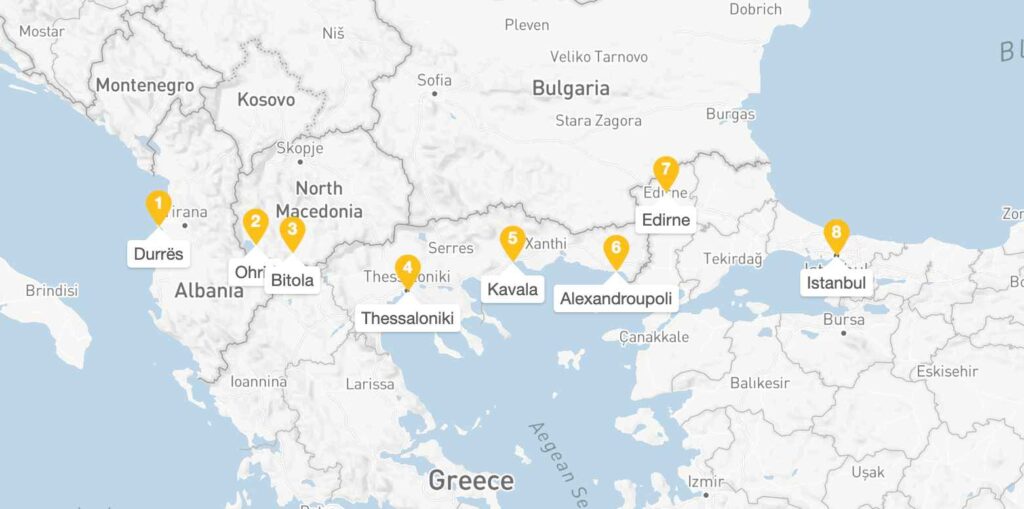
Highlights of Via Egnatia
- Visit Thessaloniki with its stunning early Christian and Byzantine monuments
- Hike in Meteora, the oddly shaped sandstone peaks where monks settled from the 11th century onward (UNESCO World Heritage)
- Visit two of the most important archaeological sites of northern Greece — Pella and Vergina
- Support conservation efforts by visiting the Arcturos brown bear shelter in Nymphaio
- Marvel at the beauty of Lake Kerkini, a top bird-watching spot
Day 1: Durrës, Albania: The Gateway to the East
Standing where the Via Egnatia began its epic journey eastward, Durrës reveals layers of empires built upon one another. This ancient port city of Dyrrachium was Rome’s most important gateway to the Adriatic, where merchants, soldiers, and pilgrims first set foot on the great road to Constantinople.
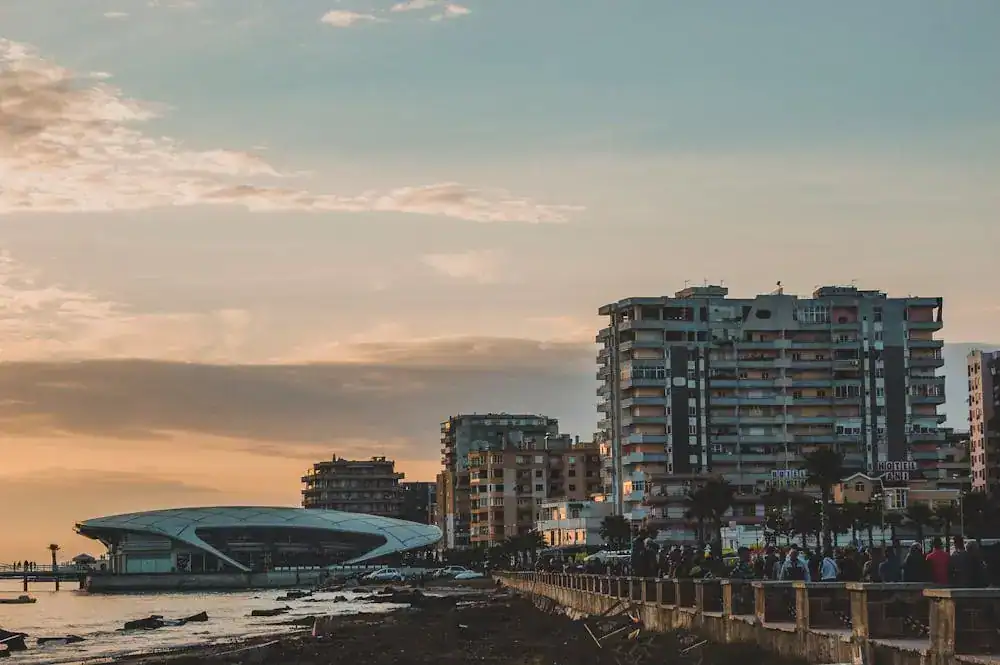
The Roman Amphitheater, carved into the hillside in the 2nd century AD, once thundered with the cheers of 20,000 spectators watching gladiatorial combat. Today, its remarkably preserved walls and underground chambers tell stories of imperial entertainment, while early Christian mosaics discovered within its foundations reveal how the empire’s faith transformed over centuries.
The Archaeological Museum houses extraordinary finds, including the stunning mosaic of the “Beautiful Women,” Roman statuary, and medieval artifacts that chronicle Durrës’ evolution from Roman colony to Byzantine stronghold to Venetian outpost.
Walking through the old town, you’ll discover authentic Via Egnatia paving stones still embedded in modern streets: the very stones worn smooth by Roman legions marching east.
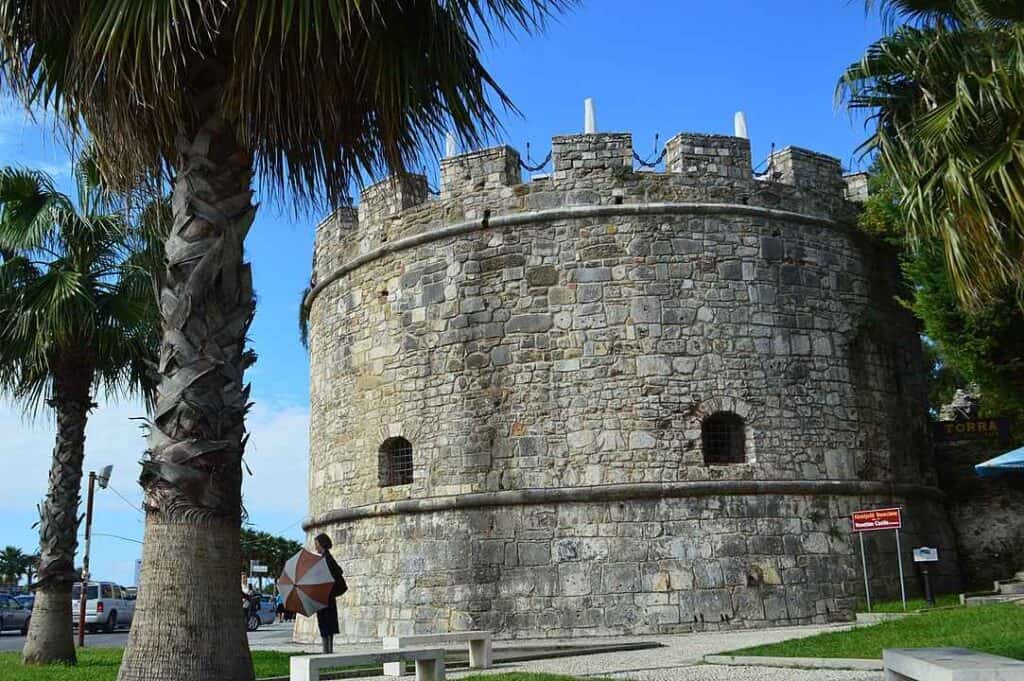
The Byzantine Forum occupies the heart of medieval Durrës, where Byzantine merchants once traded goods from across the empire.
Climb the Venetian Tower, a 15th-century fortification that offers commanding views across the Adriatic to Italy, and explore the ancient port remains where archaeologists have uncovered Roman quays, warehouses, and the engineering marvels that made Durrës the empire’s eastern port.
Day 2: Durrës to Ohrid
Distance: 135 km / 2.5 hours
The journey from Durrës to Ohrid follows the Via Egnatia through Albania’s mountainous interior, a route that challenged ancient travelers with its dramatic elevation changes.
Your first stop in Elbasan reveals why the Romans chose this location for a major fortress city. The massive Roman walls still encircle the old town, being some of the Balkans’ best-preserved fortifications. Walk along sections where original Roman paving stones remain visible, worn smooth by two millennia of travelers.
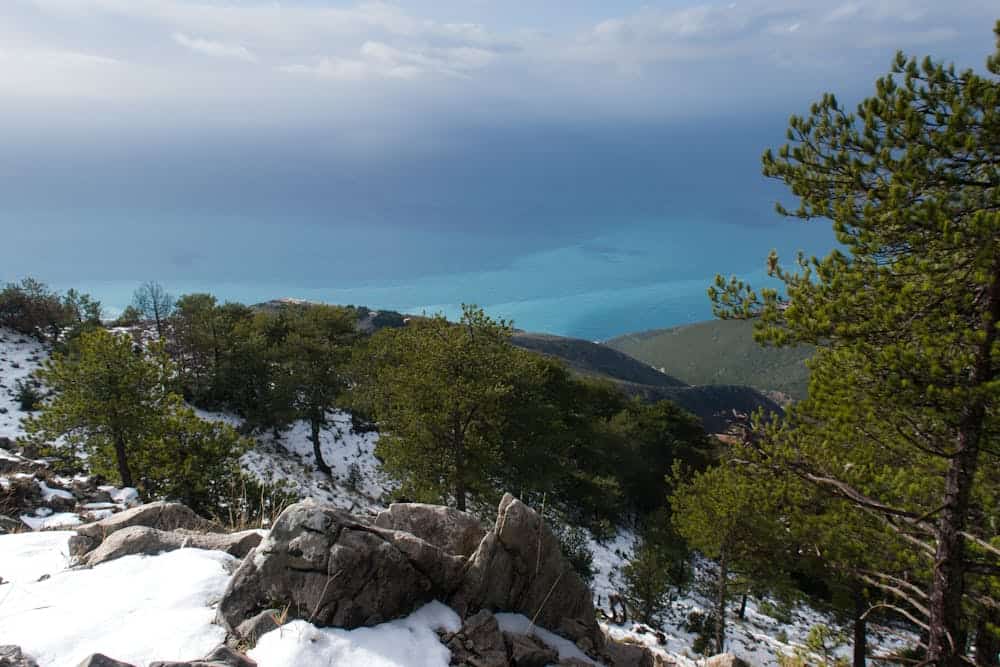
Crossing into North Macedonia, you’ll arrive at Lake Ohrid, a place so extraordinary that UNESCO declared both its natural and cultural heritage worthy of protection. The lake has existed for 3 million years, making it one of Europe’s oldest and deepest, while the town of Ohrid preserves over 2,000 years of continuous habitation.
The Roman Theater, carved into the hillside in the 2nd century, still hosts performances with the shimmering lake as backdrop. Below, the ruins of Ancient Lychnidos reveal the Roman city’s strategic importance as a Via Egnatia station, where roads from north and south converged.
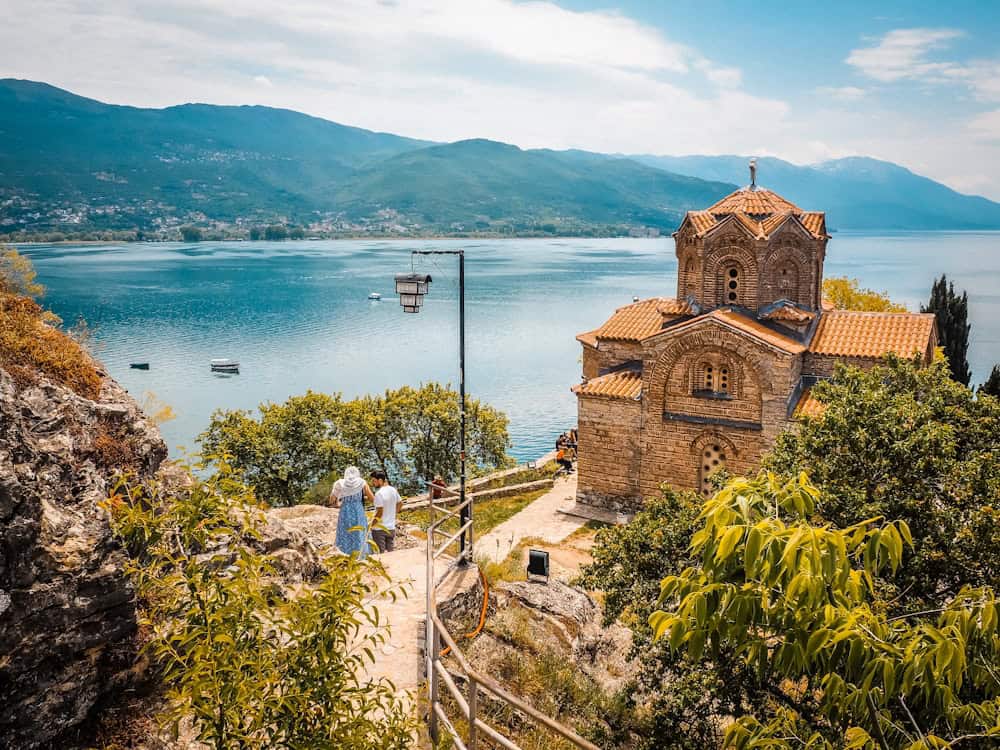
As sunset transforms the lake into liquid gold, explore Ohrid’s cobblestone streets where Church of Saints Clement and Panteleimon houses the world’s oldest Slavic monastery, and Robevi House showcases traditional Macedonian architecture with its distinctive bay windows overhanging the water.
Day 3: Ohrid to Bitola
Distance: 65 km / 1 hour
The short drive from Ohrid to Bitola follows ancient trade routes through the Pelagonia valley, where fertile plains have supported civilizations for millennia.
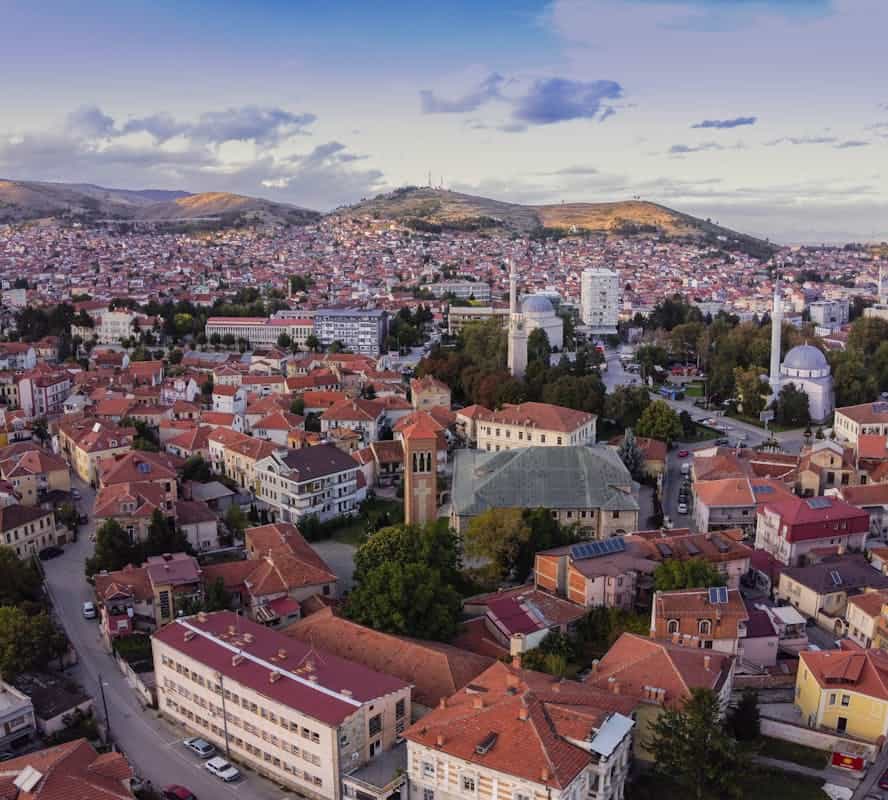
Heraclea Lyncestis awaits in Bitola, arguably the Via Egnatia’s most spectacular Roman city. Founded by Philip II of Macedon and later developed by Rome, this archaeological site preserves an entire urban landscape frozen in time.
The Roman Theater could seat 3,000 spectators and still demonstrates perfect acoustics: whisper on stage and be heard clearly in the top rows.
The Small Basilica contains some of the Balkans’ finest floor mosaics, including the famous hunting scenes where Roman nobles pursue lions, leopards, and exotic birds with breathtaking artistic detail.
Day 4: Bitola to Thessaloniki: Entering Greece
Distance: 165 km / 2.5 hours
Crossing from North Macedonia into Greece at the Medžitlija/Níki border, you enter the ancient kingdom of Macedonia, where the Via Egnatia reached its greatest glory. Thessaloniki, co-capital of the Byzantine Empire and the most important station on the Via Egnatia, preserves nearly 2,000 years of continuous urban development in extraordinary detail.
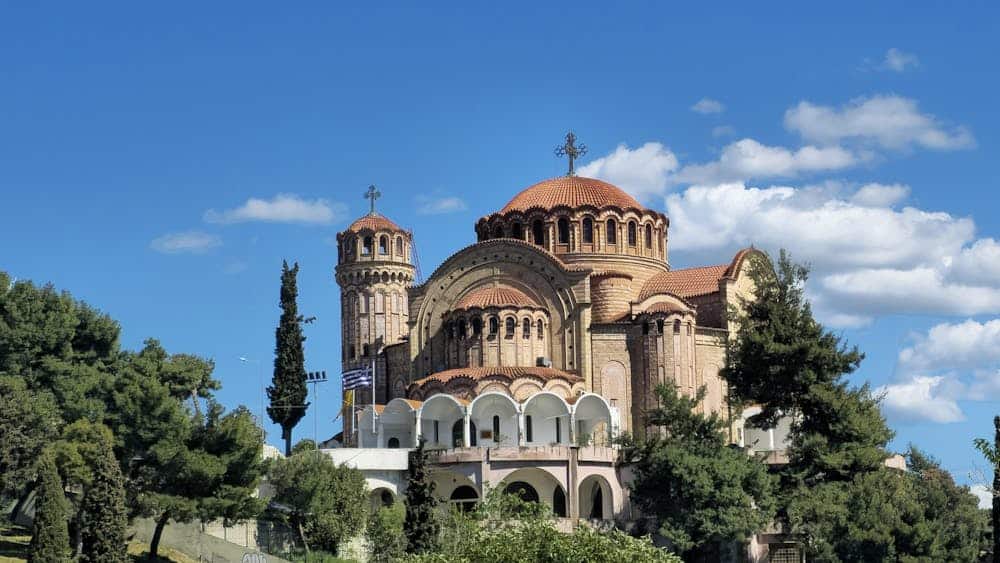
The Roman Forum Excavations beneath Aristotelous Square reveal the ancient city’s beating heart—a complex of public buildings, shops, and meeting halls where Roman citizens conducted business and politics.
Walk through underground corridors where original marble columns still support Byzantine arches, and see the Odeon where Roman elites enjoyed musical performances.
The Arch of Galerius commands Egnatia Street, standing a bit out of place, surrounded by a lot more modern buildings. Its marble reliefs celebrating the emperor’s victories over Persia in intricate detail, notice the battle scenes, captive barbarians, and triumphant Roman eagles that proclaimed imperial power to every passerby.
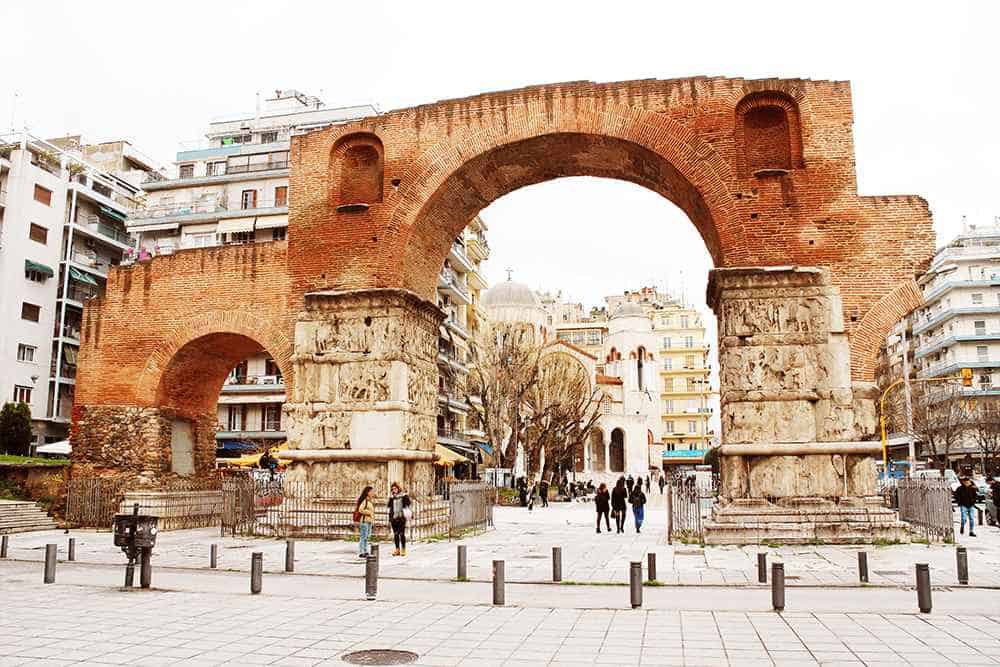
The Rotunda, originally planned as Galerius’ mausoleum, became one of Christianity’s first churches when Constantine legalized the faith. Its soaring dome contains spectacular 4th-century mosaics of saints and angels, while its massive walls (over 6 meters thick) have withstood earthquakes, sieges, and the passage of 1,700 years.
Modern Egnatia Street follows the exact route of the ancient Via Egnatia through the city center.
Day 5: Thessaloniki to Pella and Vergina
Distance: 80 km total / 2 hours driving
Today ventures into the heartland of ancient Macedonia, where Philip II forged the kingdom that his son Alexander would expand into history’s greatest empire. Pella, just 40 km west of Thessaloniki, was Macedonia’s glittering capital where Alexander the Great was born and tutored by Aristotle.
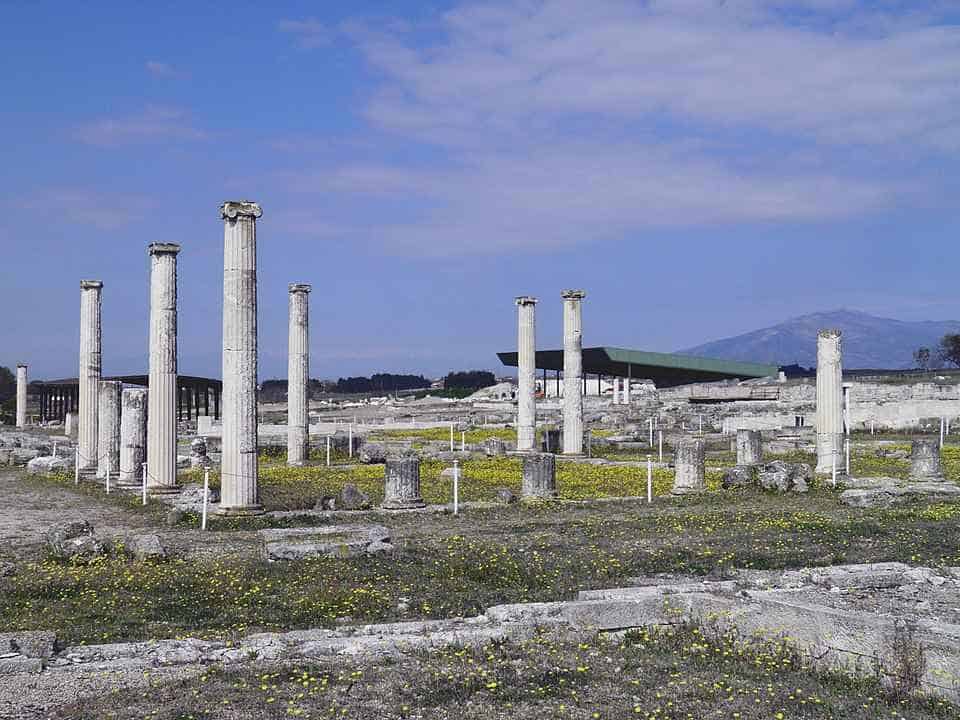
The archaeological site reveals a sophisticated Hellenistic city with pebble mosaics of breathtaking artistry. The House of Dionysos contains the famous lion hunt mosaic, while the House of the Abduction of Helen showcases mythological scenes rendered in thousands of colored stones.
The Pella Museum houses extraordinary finds, including the bronze statue of Poseidon, terracotta figurines depicting daily life, and golden jewelry that adorned Macedonian nobles. Interactive displays explain how this relatively small kingdom revolutionized warfare, diplomacy, and culture to dominate the ancient world.
Vergina, 20 km south, conceals one of archaeology’s greatest discoveries beneath its green hills. The Royal Tombs, discovered in 1977, preserve the burial chamber of Philip II of Macedon along with spectacular grave goods that rank among antiquity’s finest treasures.
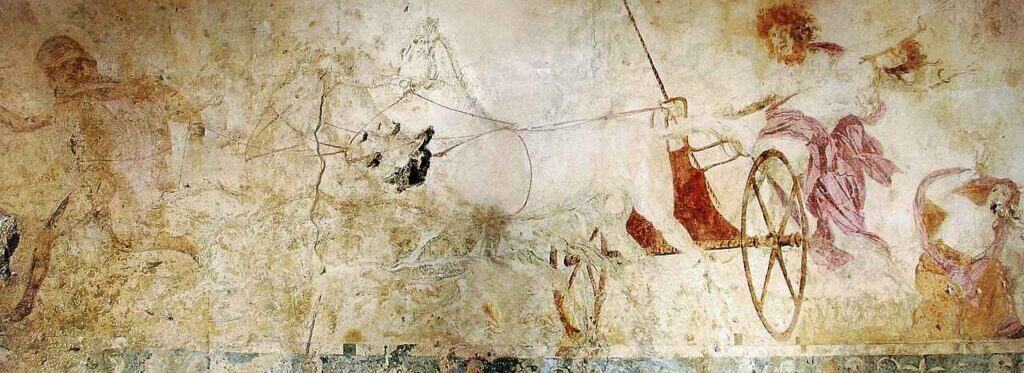
The Museum of Royal Tombs protects these underground chambers within a climate-controlled environment where you can see the golden Larnax of Philip II, his ivory portrait, the Vergina Sun symbol that became Macedonia’s emblem, and weapons that conquered the Persian Empire.
Day 6: Thessaloniki to Meteora: Monasteries in the Sky
Distance: 230 km / 2.5 hours
The drive southwest from Thessaloniki leads through the Thessalian plain to one of Greece’s most extraordinary landscapes. Meteora rises from the earth like a vision from another world, massive sandstone pillars crowned with Byzantine monasteries that seem to defy gravity itself.
These geological formations, carved by earthquakes and erosion over 60 million years, became home to Orthodox monks from the 11th century onward who sought spiritual isolation in the sky.
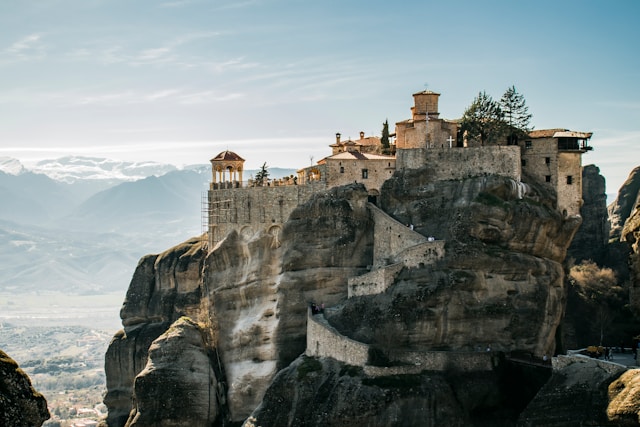
The Monastery of Great Meteoron, the largest and oldest of the surviving monasteries, perches 613 meters above sea level on a rock pillar accessible only by a precarious bridge. Its 14th-century Katholikon contains spectacular frescoes depicting the martyrdom of saints.
Day 7: Meteora to Kavala via Amphipolis
Distance: 280 km / 3.5 hours
Leaving the celestial realm of Meteora, the journey east returns to the Via Egnatia’s coastal route through Amphipolis, one of ancient Macedonia’s most strategically important cities. Founded by the Athenians in 437 BC, and later conquered by Philip II.
Amphipolis controlled the gold mines of Mount Pangaion and the crossing of the Strymon River. The Lion of Amphipolis, a 4th-century BC marble sculpture standing 4 meters tall, once marked the city’s cemetery and now symbolizes the region’s ancient glory.
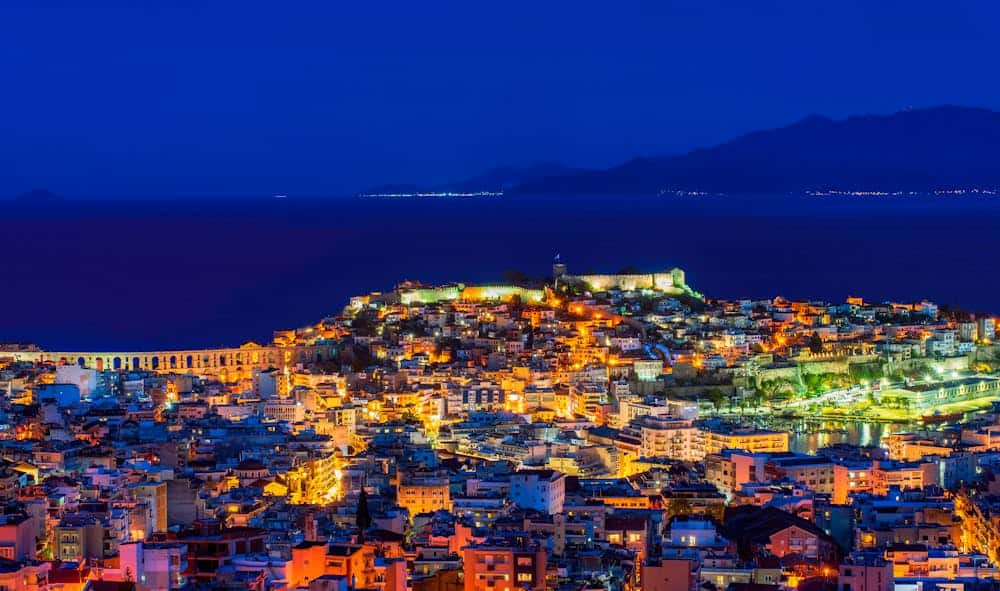
Kavala cascades down hillsides to one of Greece’s most picturesque harbors, where the ancient city of Neapolis first welcomed St. Paul to European soil in 49 AD.
The Roman Aqueduct, reconstructed by Suleiman the Magnificent in the 16th century, spans the old town on massive stone arches that supplied water to the Ottoman citadel. The Imaret, an early 19th-century Islamic theological school and poorhouse, now serves as a luxury hotel where you can dine within Ottoman-era courtyards.
Day 8: Kavala to Alexandroupoli
Distance: 180 km / 2.5 hours
The Via Egnatia’s eastern section leads through Philippi, where world history pivoted twice, first when Octavian and Mark Antony defeated Brutus and Cassius in 42 BC, ending the Roman Republic, and again when St. Paul established Europe’s first Christian community in 49 AD.
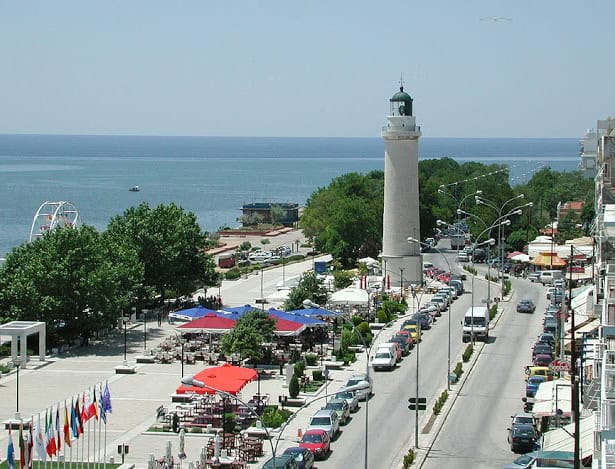
Alexandroupoli, the Via Egnatia’s penultimate major station, guards the approach to Constantinople with its iconic lighthouse rising 18 meters above the harbor. Built in 1880, this landmark guided ships through waters where ancient Roman galleys once carried grain, silk, and pilgrims eastward.
Day 9: Alexandroupoli to Edirne
Distance: 140 km / 2 hours total
The next leg of your Via Egnatia journey crosses from Greece into Turkey at Kipoi/Pazarkule, following the ancient route toward its ultimate destination. Edirne, the Ottoman Empire’s second capital before the conquest of Constantinople, preserves magnificent Islamic architecture that demonstrates the empire’s artistic and engineering mastery.
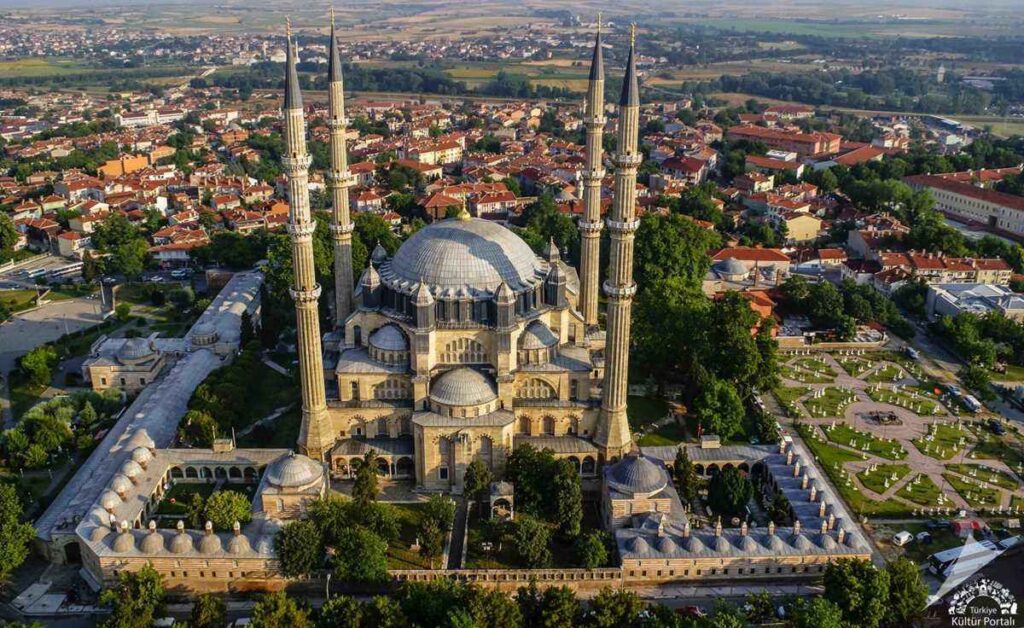
The Selimiye Mosque, Mimar Sinan’s acknowledged masterpiece, soars above the city with minarets reaching 70 meters into the sky. Built between 1569-1575 for Sultan Selim II, this UNESCO World Heritage monument represents the pinnacle of Ottoman architecture.
Its central dome, larger than Hagia Sophia’s, seems to float weightlessly above an interior where geometric patterns in marble and tile create an atmosphere of divine transcendence.
The Edirne Archaeological Museum displays artifacts spanning from Thracian tribes through Roman occupation to Ottoman glory, including Roman milestones from the Via Egnatia, Byzantine religious objects, and Ottoman ceramics and manuscripts.
Day 10: Edirne to Istanbul
Distance: 240 km / 2.5 hours
Istanbul appears across the Thracian landscape like a golden mirage, its minarets and domes crowning seven hills exactly as Byzantine Constantinople once did. The Via Egnatia’s 2,000-year journey ends here, where Europe meets Asia across the Bosphorus Strait.

Hagia Sophia, built by Justinian in 537 AD as Christianity’s greatest cathedral, became the model for Ottoman mosques after 1453 while retaining its Byzantine mosaics of Christ, the Virgin, and emperors.
The Blue Mosque faces Hagia Sophia across Sultan Ahmet Square, its six minarets and cascade of domes creating an Islamic response to Byzantine architectural glory.
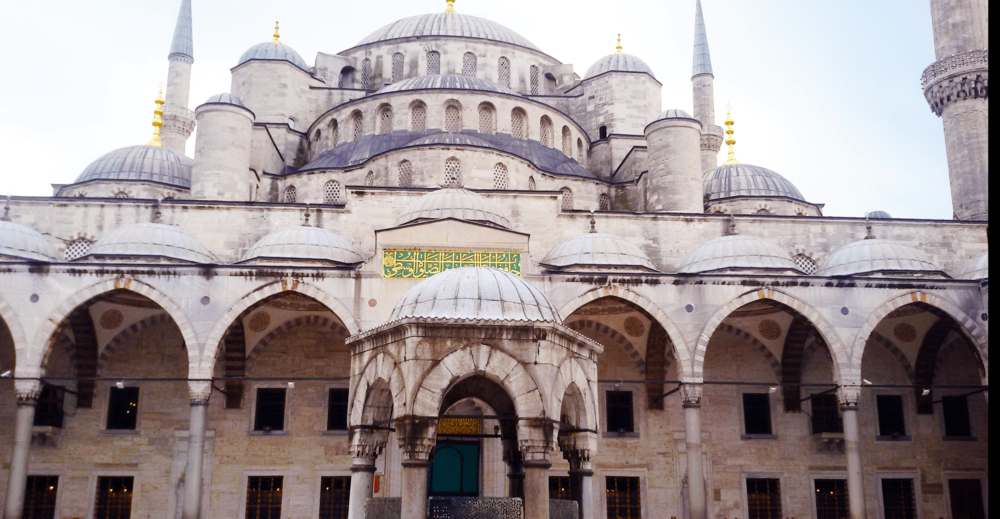
Topkapi Palace sprawls across the point where the Bosphorus meets the Golden Horn, its courtyards, pavilions, and gardens revealing how Ottoman sultans lived for 400 years.
The Grand Bazaar, with 4,000 shops under its vaulted ceilings, continues the commercial traditions that made Constantinople the world’s greatest trading city. As sunset turns the Bosphorus to liquid gold, you stand where the Via Egnatia completed its epic mission, connecting Rome’s western frontiers to the riches of the East.
Archaeological Site Passes
- Greece: Multi-site passes available
- Turkey: Museum Pass Istanbul recommended
- Advance Booking: Required for popular sites in summer
Why Take the Via Egnatia Route?
Via Egnatia Heritage Route – Durrës to Istanbul (Following the E90/A2 Highway – The Ancient East-West Connection)
This road crossed Illyricum, Macedonia, and Thracia, running through territory that is now part of modern Albania, North Macedonia, Greece, and European Turkey, creating connections that endure today.
Walking in the footsteps of Roman legions, Byzantine merchants, and Ottoman travelers, you’ll experience the living history that connects Rome to Constantinople, West to East, past to present. Each stone tells a story of empire, faith, and human determination that echoes across millennia.
Via Egnatia Quick Facts
| Total Journey | 1,120 km |
| Duration | 10 days |
| Driving time per day | 2-3 hours |
| Exploration time | 4-6 hours |
| Perfect For | History enthusiasts, archaeological tourists, and cultural adventurers |







Comments